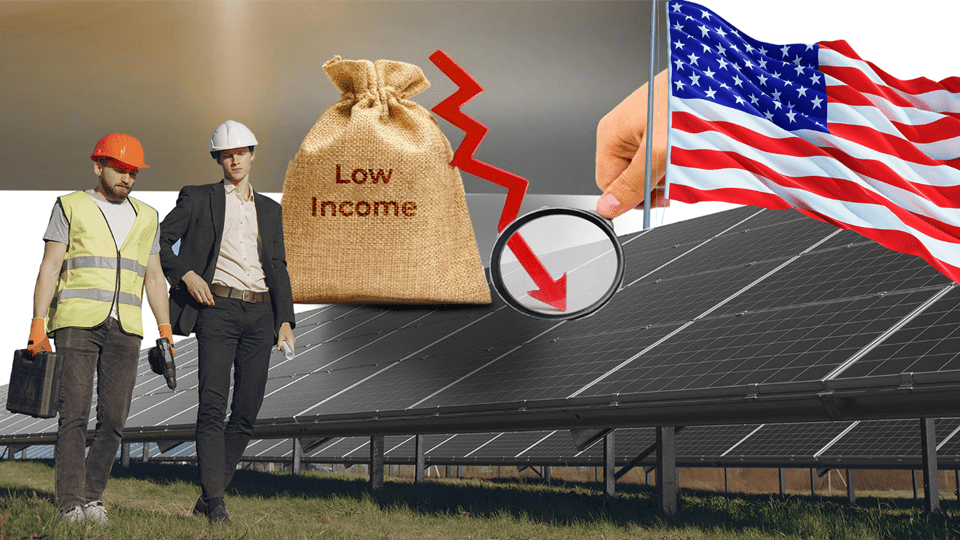What states have low-income solar programs?
What states have low-income solar programs?
Blog Article
Low-income families in the U.S. often struggle with rising energy bills, with a significant portion of their earnings spent on electricity. While solar panels offer an ideal solution to mitigate energy costs, the upfront installation expenses make it difficult for low-income homeowners to access this renewable energy source. Fortunately, several low-income solar programs exist across states, offering incentives, rebates, and grants to make solar energy affordable.
Solar Incentives for Low-Income Households
Low-income solar programs provide a range of benefits, including state tax credits and performance-based incentives, designed to make solar more accessible to families with limited income. These initiatives aim to ease the financial burden of installing solar systems, ensuring that more households can enjoy the benefits of clean, renewable energy.
How to Qualify for Low-Income Solar Programs
Eligibility requirements vary by state, but many programs cater to households earning at or below a specific percentage of the federal poverty line. Applicants may need to provide proof of income, residency, or demonstrate that their electricity usage is high compared to their income.
State-Specific Low-Income Solar Programs
1. Colorado Rooftop Low-Income Program
Colorado’s Weatherization Assistance Program (WAP) helps low-income families install rooftop solar panels. Households earning less than 200% of the federal poverty line can apply, but the installation must provide a net benefit above the system’s cost. Interested homeowners can contact the Colorado Energy Office for details.
2. Colorado Xcel Energy Solar Rewards Program
Xcel Energy offers $1.00 per watt for solar installations up to 7 kW for income-qualified customers. For instance, a 6 kW system could earn an upfront payment of $6,000, reducing installation costs. This program aims to make solar energy accessible and affordable for low-income households in Colorado.
3. Illinois Solar for All (ILSFA)
The Illinois Solar for All program, supported by the Biden administration, incentivizes solar installers to focus on low-income homeowners. Households earning at or below 80% of the area median income or residing in Environmental Justice Communities can qualify. Participants can choose between rooftop solar or community solar options.
4. Washington, D.C. Solar For All Program
Washington, D.C.’s Department of Energy & Environment (DOEE) offers a Solar For All program targeting 100,000 low-income families. Homeowners can lease solar panels at no cost, benefiting from clean energy while reducing electricity costs by 50%. Community solar projects are also available for those unable to install rooftop panels.
5. New York Solar for All Program
New York’s Solar for All program enables residents in specific counties to participate in local community solar projects. Qualified applicants can save between $5 and $15 monthly on their electric bills without the need to install panels. Applications can be made through NYSERDA’s website.
6. Massachusetts Solar Renewable Target Program (SMART)
Massachusetts offers an incentive through its SMART program, rewarding homeowners for each kilowatt-hour (kWh) of solar energy generated. Additional bonuses are provided to low-income families to make solar installations more affordable.
The Importance of Expanding Low-Income Solar Programs
Despite the growing interest in renewable energy, many low-income households still cannot afford solar power. According to the Solar Reviews 2024 Solar Industry Survey, only 6% of clients had an annual income below $50,000. Expanding low-income solar programs can close this gap, ensuring that the benefits of solar energy reach the households that need it the most. Offering financial support through state programs not only reduces energy costs but also promotes environmental sustainability how to qualify for low income solar programs and energy equity.
Conclusion
Low-income solar programs provide a vital opportunity for families to reduce their electricity costs while embracing clean energy. With incentives like rebates, tax credits, and community solar projects, these programs are designed to make solar energy accessible for all. By taking advantage of these programs, low-income households can achieve greater financial stability and contribute to a more sustainable future.
 Report this page
Report this page